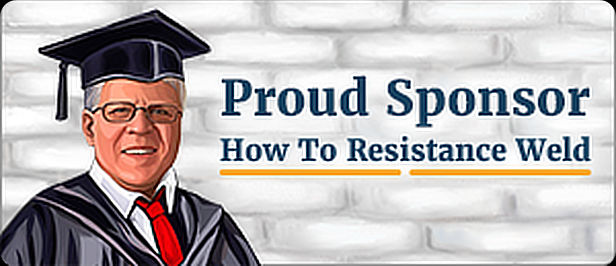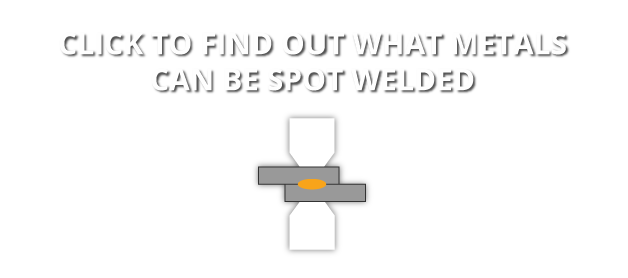| RWMA Class | Common Name | Material Designationa | Description | General Applicationb | Availability |
| Group A - Copper Base Alloys | |||||
| 1 | Zirconium Copper | C15000 | A specially heat treated zirconium copper alloy. | electrodes for welding aluminum alloys, brass and bronzes, coated materials and magnesium alloys. Can be used for both spot and seam welding. | Forgings, Rod and Bar |
| 2 | Chromium-Zirconium Copper | C18150 | A specially heat treated chromium-zircomium copper alloy that meet the minimum electrcal and hardness specifications of Class 2 material. Should be used in the fully heat-treated condition. | These materials are stronger than Class 1 material, have slightly lower connductivity. They are used for spot and seam welding of cold and hot rolled steel, stainless steel and low conductivity brass and bronze. They are also used as flash welding dies, and as electrodes for the welding of galvanized steel and other coated materials. | Castings, Forging, Rod, Bar and Plate |
| Chromium Copper | C18200 | A high conductivity chromium copper alloy. Its optimum properties are obtained through a combination of both heat treatment and cold work. Should be used in fully heat-treated condition. | Casting, Forging, Rod, Bar, Plate and Tube | ||
| 3 | Cobalt-Berylium Copper | C17500 | Heat treatable copper alloys with a combination of high tensile strength and good electrical and thermal properties. They should be used in the fully heat-treated condition. | Their high hardness makes them ideal electrodes for spot and seam welding of high resistance materials such as stainless steels, Nichrome, Inconel, and Monel. As a casting, they are used for flash, butt and projection welding electrodes and fixtures. They are also used as welding gun components, seam welding bearings and other current carrying structural parts. | Castings, Forging, Rod, Bar, Plate and Tube |
| Nickel-Berylium Copper | C17510 | ||||
| Nickel-Cobalt-Berylium copper | C17540 | ||||
| Nickel-Silicon-Chromium Copper | C18000 | ||||
| 4 | Berylium Copper | C17200 | Heat treatable copper alloy having the unusual combination of very high hardness, high strength and lower electrical conductivity than Class 3 materials. Should be used in fully heat-treated condition. | Electrode material for flash, upset-butt and projection welding applications where pressures are extremely high and wear is severe, but where heat is not excessive. They are used frequenlty in the form of inserts and facings. They may also be used for seam welding bushings. Strength, mechanical wear and conduction is their strong attributes.. | Castings, Forgings, Rod and Bar, Plate, Tube |
| Group B - Refractory Metals | |||||
| 10 | Copper Tungsten | N/A c | A Powder metallurgical composite of 45% copper and 55% the refractory metal tungsten. Not a true alloy. The tungsten provides the structural strength and heat resistance while the copper is the electrical and heat conductor. This combination produces dense, hard metals of superior wear resistance and strength at elevated temperatures. In addition, they possess good thermal and electrical conductivity. | Flash and butt welding electrodes where good electrical and thermal conductivity is necessary and where a degree of malleability is desired. | Rod, Bar and Inserts |
| 11 | Copper Tungsten | ASTM B702 C1D | A powder metal composite of 25% copper and 75% the refractory metal tungsten. Not a true alloy. The tungsten provides the structural strength and heat resistance while the copper is the electrical and heat conductor. This combination produces dense , hard metals of superior wear resistance and strength at elevated temperatures. In addition, they possess good thermal and electrical conductivity. | Projection welding electrodes, flash and butt welding elctrodes, light upsetting and seam welding bushings. Harder than Class 10 and used where moderate pressure is required. This material can also be used for spot welding low conductivity steels, such as stainless. | Rod, Bar and Inserts |
| 12 | Copper Tungsten | ASTM B702 C1E | A powder metal composite of 20% copper and 80% the refractory metal tungsten. Not a true alloy. The tungsten provides the structural strength and heat resistance while the copper is the electrical and heat conductor. This combination produces dense , hard metals of superior wear resistance and strength at elevated temperatures. In addition, they possess good thermal and electrical conductivity. | Heavy duty projection welding electrodes, electro-forming and electroforging electrode facings for upsetting of studs and rivets, cross wire welding of large diameter wire and rod. | Rod, Bar and Inserts |
| 13 | Tungsten | N/A | Tungsten is extremely hard and has low ductility. In addition tungsten is very heat resistant and maintains it s strength at very high temperatures. It cannot be machined with cutting tools but can be ground to required contours. It does not alloy with nonferrous materials. | Cross wire welding of copper and brass, resistance brazing and some upsetting. Welding of braided copper wire to other materials. | Rod, Bar and Inserts |
| 14 | Molybdenum | ASTMB387 Type 360 | Not as hard as Class 13 and can be drilled and machined to special contours. Has similar heat resistance approaching Class 13 capabilities and very good strength at elevated temperatures. | Cross wire welding of copper and brass, resistance brazing and some upsetting. Welding of braided copper wire to other materials. | Rod, Bar and Inserts |
| Group C - Specialty Materials | |||||
| 20 | Dispersion Strengthened Copper | C15760 | A powder metallurgy material consisting of copper and aluminim oxide with high temperature hardness and physical properties different than copper alloys. Not a true alloy. | Welding of metallic coated metal such as galvanixed steel, terne plate, etc. | Rod, Bar and Plate |
| 21 | Dispersion Strengthened Copper | C15715 | Applications requiring the highest electrical and thermal conductivities along with good elevated temperature strength | Rod, Bar and Plate | |
| 22 | Dispersion Strengthened Copper | C15725 | Welding of metallic coated metal such as galvanixed steel, terne plate, etc. | Rod, Bar and Plate | |
a. Numbers with the alloy designatin Cxxxxx are UNS numbers managed by the Copper Development Association (CDA), numbers with ASTM disignations are ASTM.
b. This table provides general comments about common application of various class materials. More specifec information may be obtained from material, electrode and equipment manufacturers.
c. N/A is not assigned.
Reference:
- American Welding Society Publication J1.3


